Alexandra, a calligraphy artist, failed at building her business after two years.
Why? She didn’t promote herself enough. She didn’t build relationships with her artist friends — which ultimately resulted in not getting enough projects to sustain her business.
The truth is, she wasn’t leveraging her personal brand.
You may not realize this, but you have a personal brand. And even if you’re aware of your personal brand, maybe you’re not using it to its full potential.
But don’t worry.
In this article, we’ll teach you everything about social media personal branding, from what a personal brand means to the steps you need to take to build your personal brand online.
Let’s dive in.
What is social media personal branding?
Social media personal branding is your online reputation. It’s about how people perceive you and talk about you with others when you’re not in the same room.
Charly, a lifestyle and physique coach, creates custom programs to help build leaner and stronger physiques for busy professionals.
He’s achieved dozens of transformations for many clients who’ve been struggling to hit their fitness goals. Plus, he is an incredible, down-to-earth coach.
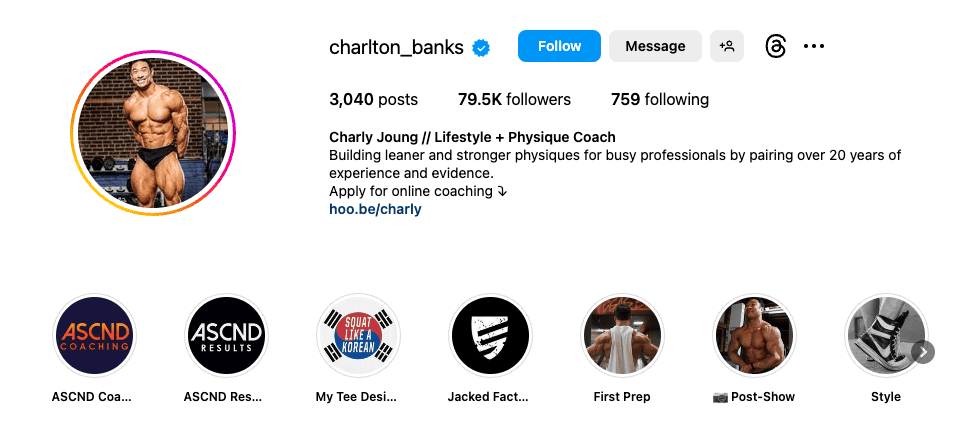
When his clients introduce themselves to their friends, they’ll:
- Rave about the transformation results they’ve achieved
- Talk about Charly’s skillfulness in training and fitness
When people talk about your expertise, achievements, journey, and interests, you’re building your personal brand.
And it is because of this personal brand that people recognize you. To further enhance his personal brand and reach a broader audience, Charly could consider partnering with fitness app development services to create a custom mobile application that delivers his unique training programs and expertise directly to his clients’ smartphones. And a third person can talk about you and introduce you to other people in their network (even when you’re not part of their network).
Word of mouth is powerful. In fact, studies show that 90% of people trust a recommended brand — even from strangers. And when 23% of people talk about their favorite products or services with friends every day, it’s clear that you want to leave a positive, lasting impression.
That’s exactly how Charly built a following of over nearly 80,000 people on Instagram. He doubled down on building a personal brand on social media. And it paid off in strides. Well done, Charly.
Why is personal branding important?
Your personal brand reflects the real YOU. It showcases your personality and who you are beyond your expertise and skills.
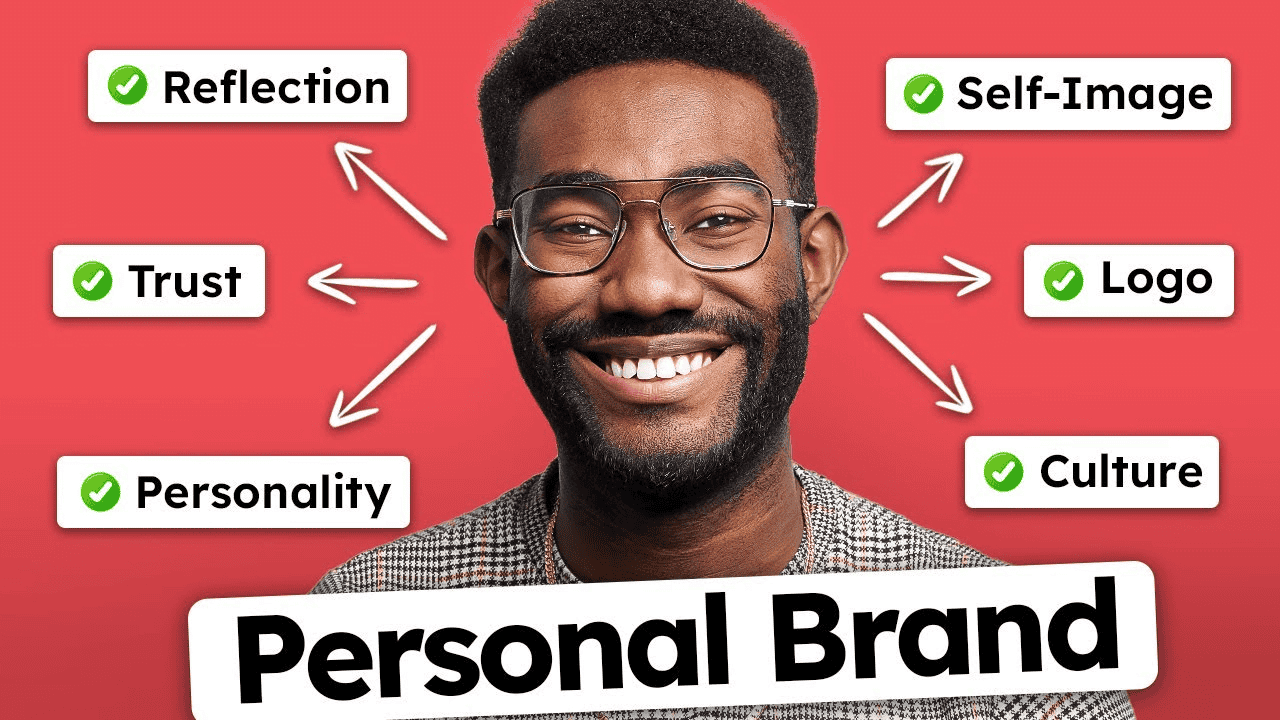
But how does this exactly help you in today’s online world? Let’s peel back the curtains:
- It builds trust and credibility by standing out from competitors and showing why people should work with you.
- It brings you inbound opportunities even without pitching your products and services.
- It increases your perceived value by sharing your achievements and journey.
What building your personal brand can bring you is endless. From high-quality leads to a trustworthy reputation, the power of a personal brand is priceless.
But, what people usually struggle to figure out is: how to build (and maintain) that personal brand. This leads us to…
5 Steps To Build Your Personal Brand On Social Media
We all turn to social media as a way to unwind after a long day at work. Or to post about our weekend hiking the mountains. Without knowing it, all of these small interactions contribute to our personal brand on social media.
But what if you want to give your personal branding strategy more than just a quick 30 minutes here and there? Well, you can. Here we’ve outlined the five simple steps to help you along your personal branding journey.
And the best part? You can apply these steps to any social media platform you want to build your personal brand.
Step 1: Figure out your goals
Let’s start by answering a foundational question: What do you want your personal brand to help you accomplish?
To help you find your path forward, try asking yourself a few questions, like:
- Are you looking for a new job or transitioning to a new industry?
- Do you want to generate high-quality leads for your business?
- Do you want to build a side hustle for additional income?
Whatever your goals are, jot them down and make them specific to work towards a clear and expected outcome.
For example, if you are a freelance AI content writer with a goal of landing two new projects next quarter, specify what kind of project you want to take up (i.e., what niche) and what kind of content and outreach you’ll need to create to achieve this goal.
Here’s an excellent example of a freelance writer using a pinned tweet on her Twitter profile to showcase what projects she’s hoping to tackle this year:

Here’s another example. You’re a fitness influencer with a goal to land collaborations with health brands like Form Health, a telehealth program specializing in Wegovy online prescriptions for weight loss.
So how do you go about landing these coveted opportunities? You’ll need to create fitness content that’s trustworthy, relatable, and consistent. And what better way to build trust than clearly listing your qualifications in your bio?
Zoe Ziegler highlights her professional criteria in her Instagram bio, showcasing why she’s the perfect fitness coach to partner with Form Health:
- She’s a board-certified physician assistant
- She specializes in women’s weight loss
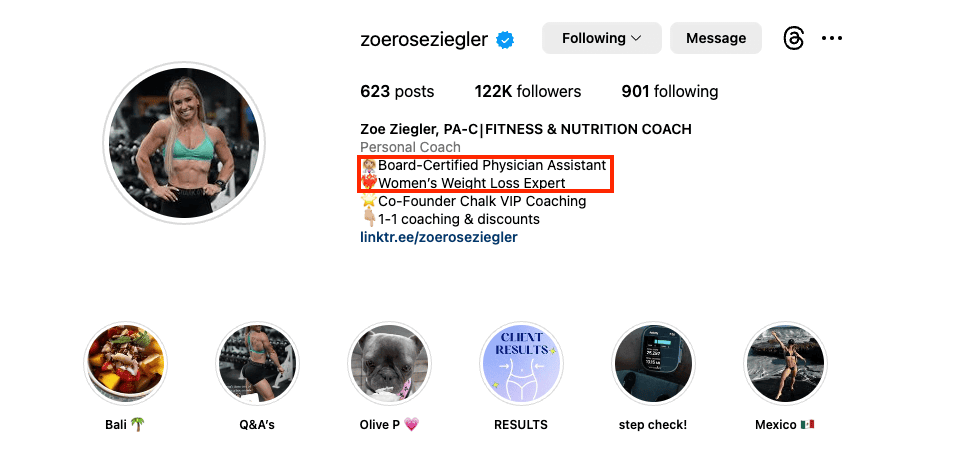
Following this approach, Zoe has the potential to unlock dozens of sponsorships with health brands who’ll come knocking on her door, begging to tap into her following and expertise.
Step 2: Be clear on what you want to be known for
Defining what you want to be recognized as is a crucial aspect of building a presence across social networks. It could be your profession, skills, or maybe a social mission you’d want to be known for.
Maybe you are a project manager who’s reliable and always gets things done on time, or maybe you are an artist who makes beautiful sketches.
Or, maybe you’re an entrepreneur who gives back by partnering with local non-profit organizations. For example, if you run a sustainable business that sells eco-friendly man-made diamonds, you might showcase your partnership with One Tree Planted across all of your social media platforms.
Why? It “shows” your commitment to sustainability rather than just telling the story via generic copy on your website. And with a mission to reduce the harmful effects of traditional diamond mining, it’s a no-brainer to bring awareness to this cause and the benefits your brand has on the environment.

So, dig a little deeper into the what, how, and why behind your work.
Think about all the aspects that can make you stand out in the crowd. Is there anything unique about your craft or area of expertise? Or maybe some new skills that you mastered in your career?
Once you’ve identified it. It’s time to put it up and lights and broadcast it for everyone to see.
Step 3: Know your audience
Imagine building your personal brand and sharing posts on Facebook and other social media without defining your audience. Meh. That’s a disaster. It’s like throwing spaghetti at the wall and hoping that something sticks.
When you have no idea who your audience is, your return on investment (ROI) will suffer. That means you’ll never be able to reach that goal you defined for yourself initially. So, take a step back and fully understand your target audience.
Here’s how:
- Go to Quora and search for topics related to your niche. Observe the questions people have asked and understand the psychology behind these questions.
- Type your topics of expertise in Google Trends and see what kind of questions people have asked. These details will give you a sense of what people are actively searching for.
- Go to subreddits relevant to your niche, such as “r/marketing,” and check out the questions people are asking and read the conversations happening in the threads.
For example, if you are a fashion influencer, you can go to Google and type in keywords like “leather pants,” which will give you an autocomplete list of long-tail keywords that people are also searching for.
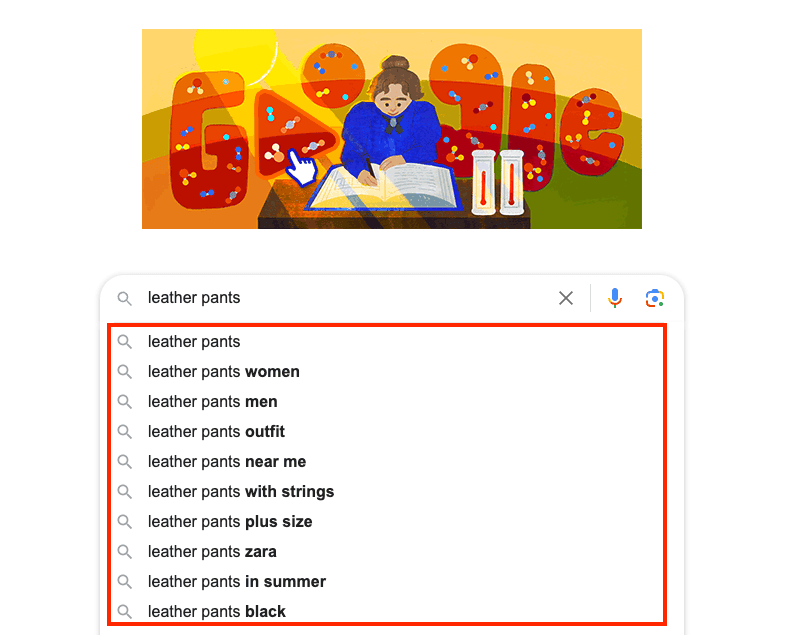
By doing all of this, you’ll be able to break down the pain points of your target audience and find the search intent behind their questions. Using these simple steps, you can get a better understanding of your target audience.
Step 4: Create a mission statement
Whether you’re building your company brand or your personal brand, crafting a mission statement is important. It’s the mission statement that helps you create a unique identity and attract the right audience.
By answering the following four questions, you can identify your areas of expertise, your people (who you’ll create content for), and your purpose for building your personal brand.
- Who are you?
- What do you do?
- How do you help your audience?
- What are the products and services you sell?
Customize these questions for yourself and answer them. And if you need inspiration, follow Jeremy Moser, the CEO at uSERP, as a guide on what to do.
Here’s an example of what Jeremy’s mission statement might look like:
Who are you: Jeremy Moser
What do you do: CEO at uSERP
What is your expertise: SEO, marketing, copywriting, link building
How do you help your audience: Scale SEO-driven revenue 10x faster than hiring in-house.
But Jeremy takes it a step further. He adds all of this information to his LinkedIn bio to share with current and prospective clients about his personal brand.
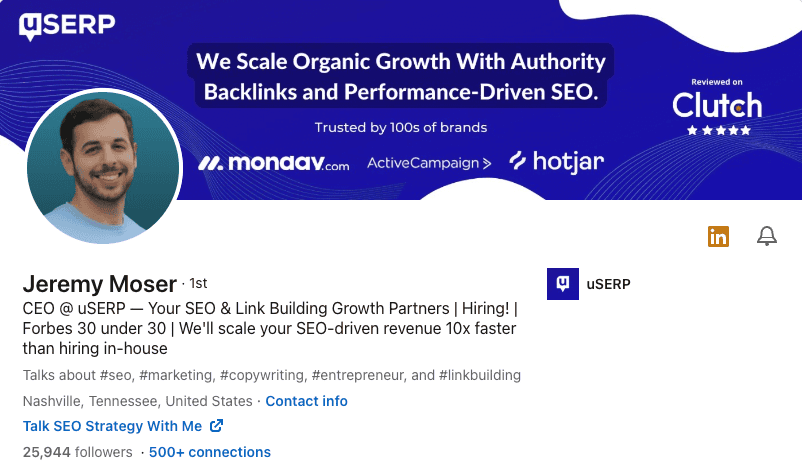
The result? Through his personal brand, Jeremy has gained nearly 26,000 followers who tune in daily to learn the latest industry trends and expert insights on all things marketing, SEO, and link building.
And through that, he also generates leads for his agency. It’s a win-win.
Step 5: Create content relevant to your expertise
So, you’ve defined your expertise and identified your ideal audience. Now it’s time to start publishing content on your social media channels. But before that, you need to strategize your entire social media plan.
Here’s how:
Define your niche
Identify the niche you want to create content for. Doing so, you can create highly targeted content to connect with your target audience.
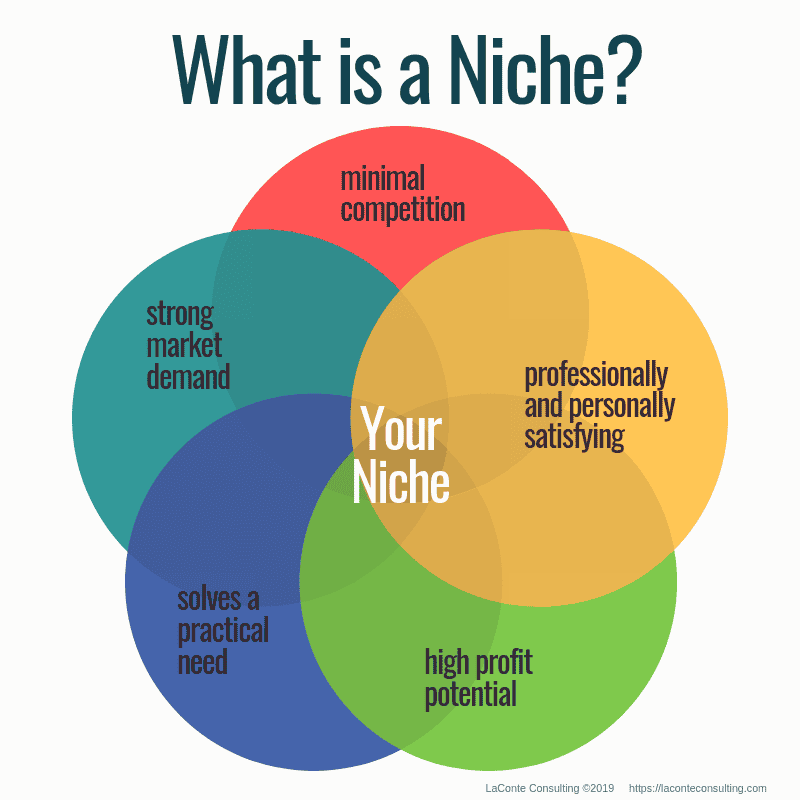
While defining your niche, note that it doesn’t always have to boil down to a specific geographic location. For instance, as a wedding planner, you might consider using Breezit platform to find hidden wedding venues all over California (starting from Los Angeles and ending at Orange County) or collaborating with flower shops and florists across different states.
Why? This approach can help gain exposure and credibility among a wider audience within your specific niche.
Think of it this way. Suppose you start via a collaboration with florists from Virginia Beach, and then you create content featuring flowers in Fort Lauderdale. Collaboration across flower shops in different geographic locations helps you solve a practical need (finding a local flower shop for wedding arrangements) but can help expand your audience, ultimately leading to brand growth and increased credibility.
And for the icing on the cake, you can promote a discount code for a more convenient option, like flower delivery in Lubbock, Texas. That way, couples planning out-of-state weddings can still get their flowers delivered just in time for the big celebration.
The result? A personal brand that stands out in the crowded wedding planning social media space. And the next time a bride searches for the best florist shops in a certain area, they’ll come straight to your Instagram profile to find out the latest information on who to trust for their wedding flowers.
Choose your format
Now, it’s time to determine the best content formats you want to use to publish your social media posts. So what’s the secret formula? Well, there isn’t a one-size-fits-all solution.
Start by identifying what type of content you enjoy creating. For instance:
- Do you like writing to communicate? → Create text posts on LinkedIn.
- Do you like to engage with your audience personally but don’t like to be on the screen? → Try hosting audio events and podcasts.
- Do you like to show your face to build a personal connection? → Dabble in video content.
- Do you like visual content but don’t want to create videos? → Leverage carousel posts and infographics.
But that’s just one piece of the puzzle. You should also consider what your audience enjoys best. And if they like a few different types of content, that’s great too. Because repurposing content has never been easier on social media.
For example, you can repurpose your text content into audio and video content using professional text-to-speech tools. In other words, you can take a blog post and turn it into short-form video content for TikTok and a long-form video on YouTube.
And you don’t want to underestimate the power of video in today’s digital world. Consumers love seeing videos on social media, and 66% agree that short-form video is the most engaging type of content. It’s a no-brainer.
Create a content calendar
Life’s busy. And it’s easy to fall off track when publishing social content for your personal brand. So you’ll need a dedicated strategy to hold you accountable for planning and publishing content every week.
First, define the number of times a week you want to publish content. For example, if you want to publish twice weekly, plan the content you’ll put out on a specific day and time.
From here, you can use a content planner to grow your personal brand on various social media channels. Why work harder when you can work smarter?
With a social media planner, you can create, draft, approve, and schedule your content for all your socials in one place.
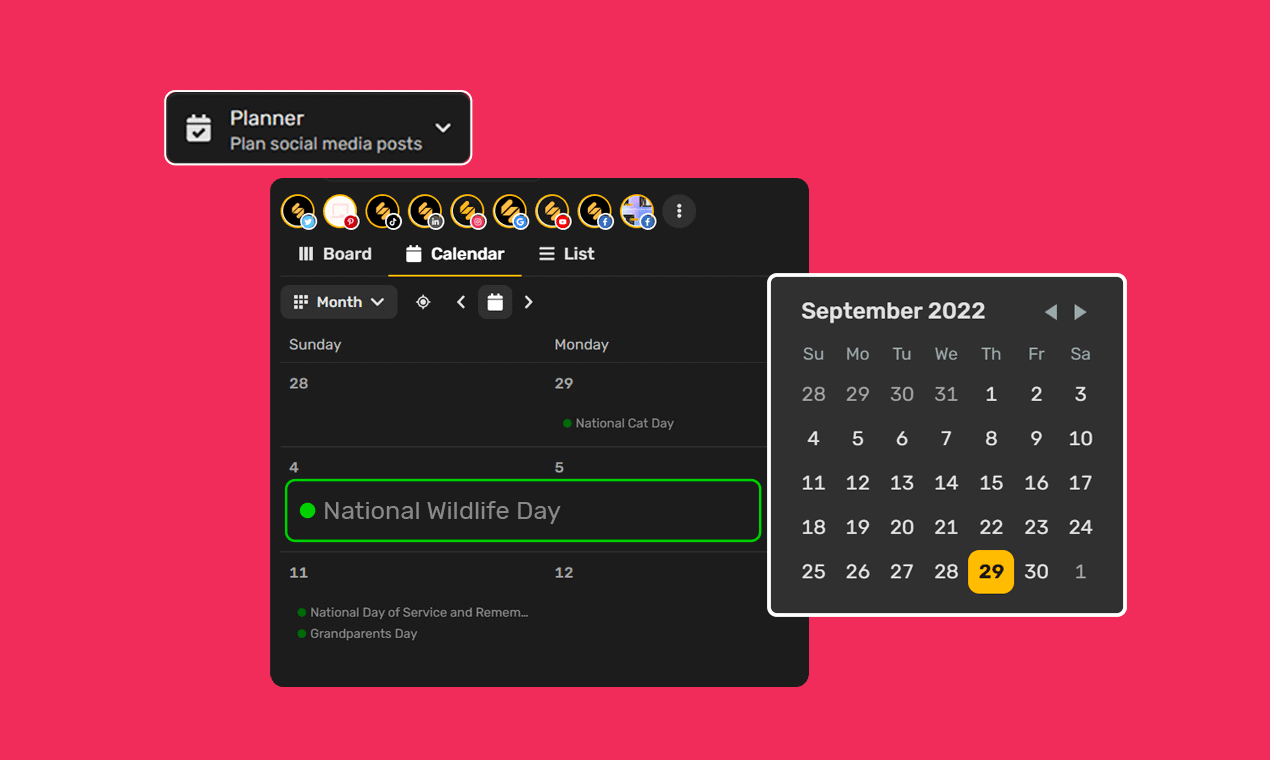
Investing in the right technology to do the heavy lifting is often an underutilized strategy, especially for building a personal brand. But a marketing team wouldn’t think twice. So don’t let this opportunity to gain a competitive advantage slip through the cracks.
5 Tips To Sustain Your Personal Brand On Social Media
Creating a social media plan to build your personal brand isn’t enough. You need to know and implement a few tips to stay on track. Here are a few tips to help you constantly improve your personal brand.
Tip 1: Optimize your social media accounts
Make sure your social media accounts are SEO-friendly. On your social media profiles, use keywords you want to appear in searches for.
For example, if you want to be known as an e-commerce consultant on LinkedIn, sprinkle the keyword ‘e-commerce consultant’ in your tagline, about section, experience, and testimonials.
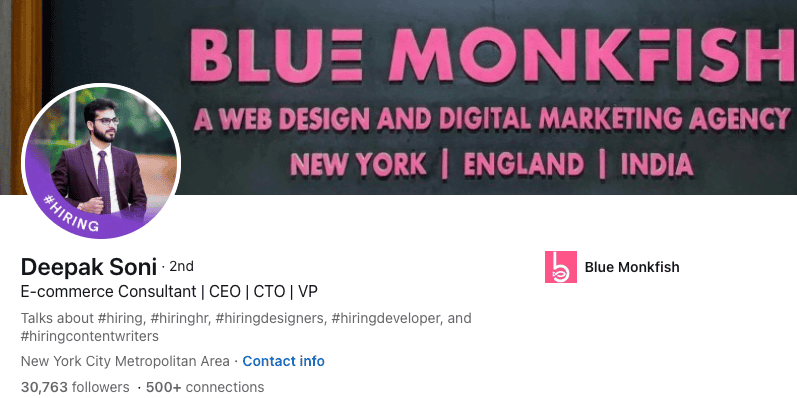
Tip 2: Keep your social media posts positive and engaging
Nobody wants to read dull and boring social media posts. So make sure the content you publish should be interactive and positive. Use the following best practices to make your social media posts stand out:
- Use bullet lists and formatting elements like bold, italics, and underlining
- Use a hook in the first three lines of your social media posts
- Use questions to inject curiosity among readers
- Use white spaces for better readability
Tip 3: Create consistency in your brand persona
Having a cohesive and visually appealing Instagram feed can make a significant impact on your personal brand.
Take a look at Chelsea Kreiner, a lifestyle/travel vlogger. Her Instagram feed is filled with turquoise blue water from around the world. Doesn’t it help spark wanderlust within? Well, that’s her goal.

An Instagram post planner is a valuable tool to help you achieve a well-organized and aesthetically pleasing feed like Chelsea’s. These tools allow you to schedule and plan your posts in advance, ensuring consistency and strategic content distribution.
Using an Instagram post planner, you can effortlessly curate a captivating feed that aligns with your brand. And by doing so, you make it easy for people to recognize you easily on social media.
Here are a few other things to remember:
- Create clear guidelines for your social media accounts — fonts, icons, tone of voice, and grammar.
- Visual uniformity across all platforms — profile picture, logo, and cover picture must be the same on all social media accounts. Using an AI logo generator can streamline the process of creating logos that align with your brand’s identity, ensuring consistency and saving time.
Tip 4: Track mentions and respond fast
Keep a tab on your notifications and respond to each comment you receive on your social media posts or on the ones where you’ve been tagged.
But make sure to keep your tone polite and positive while responding to each comment.
Tip 5: Repurpose, repurpose, repurpose
Content is king. So publishing as much content as possible without sacrificing quality is the recipe for success on social media. And what’s the best way to do that? Content repurposing.
And that’s where Bulkly comes into play. You can create and share tons of social media updates with ease. How?
- Import blog posts from RSS feeds to publish social media updates at scale
- Leverage AI to create new content ideas
- Automatically delete old or outdated posts to keep your content fresh
And the best part? You can try it for free. 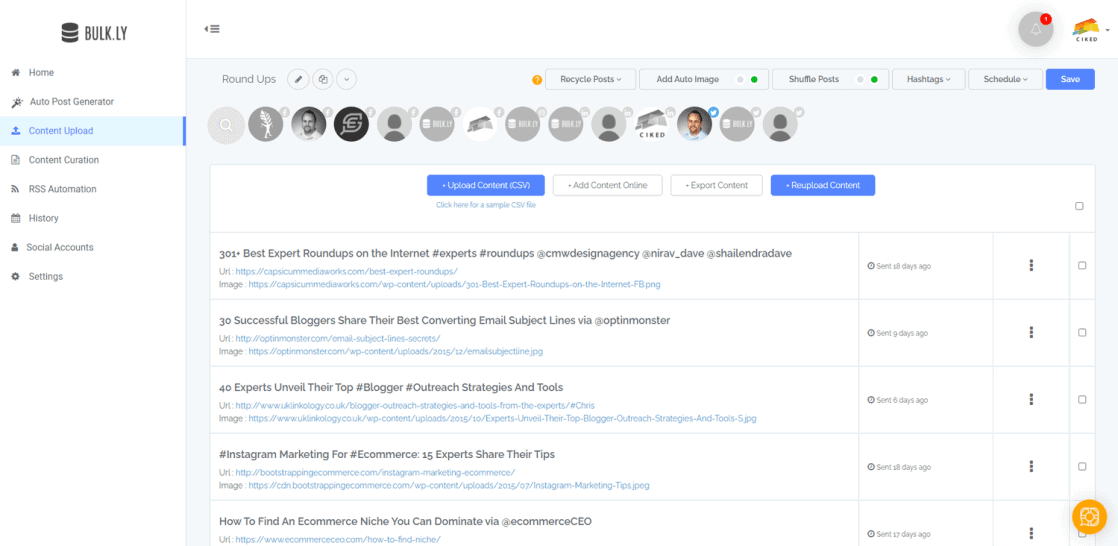
Wrapping Up Personal Branding on Social Media
Building your personal brand isn’t just about publishing social media content. It is about defining your purpose, creating your strategy, and humanizing your brand through storytelling.
To help you achieve each of these aspects, we have shared above a step-by-step process and a few tips that you can implement while building your personal brand online.
So, whether you’re already building your personal brand or are in the process of building one, pick these tips and strategies and customize it for your platform.


